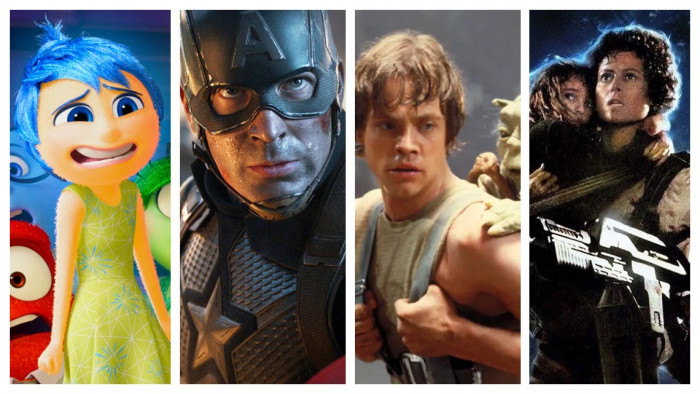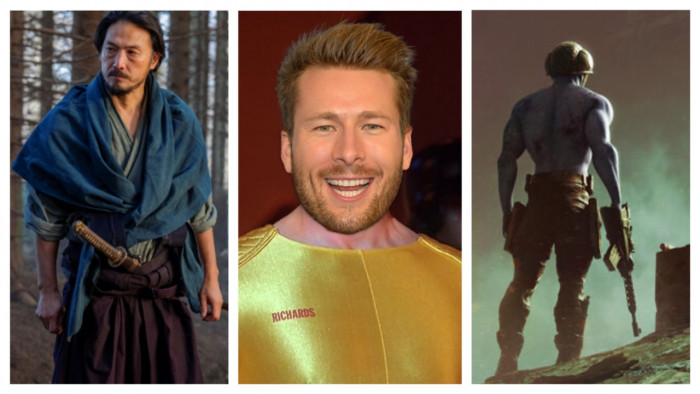How emojis kicked down the door of the English language
From smiley turds to angry devils, emojis have taken over the world – but at what cost?


Casper Grathwohl is a man with a very serious job. As President of Oxford Dictionaries, he is the de facto gatekeeper of the English language. The bouncer at the door of the Vocabulary Club.
A little over a year ago, a fight broke out on Grathwohl’s watch. He and his verbose colleagues had chosen a little yellow face with damp cheeks – AKA the ‘face with tears of joy’ emoji – as the Oxford Dictionaries’ word of the year.
People lost their shi*t. From writers to cultural commentators, a cloud of rage descended upon the lingosphere. Not only, they pointed out, is a cartoon orb with a smile not even a word, but its elevation by Oxford Dictionaries marked the end of days: the dumbing down of our beautiful language.
“A lot of people hated our choice,” recalls Grathwohl, without the merest hint of remorse. “We got word-fan hate mail.” So why do it? “We usually select a word that captures what’s been happening that year in a way that’s reflected linguistically, but which also captures a sentiment and a mood. And when we looked back on 2015, one of the things that struck us was how emoji culture was exploding and it was moving from teens texting into the wider culture in a dramatic and rapid way. We knew it was something that some traditionalists might raise an eyebrow to, but we wanted to say that this is a big development in terms of communication.”
In 2017, emojis aren’t just big, they are ubiquitous. There’s the emoji merchandise; the blockbuster The Emoji Movie and over six billion emojis are sent every day.

Across age groups, across cultures, across the world, we’re all peppering our texts, tweets and emails with these characters. From ‘smiling face with heart-shaped eyes’ to ‘speak-no-evil monkey’, the little pictograms have infiltrated our every written communication. But before you start to resemble the ‘loudly crying face’ emoji, chillax, because emojis might actually be making us better at talking to one another.
Time was, letter-writing was a real art form. If you wanted to keep in touch with a friend, you had to muster all your linguistic capabilities to craft a missive that your pal would want to keep in perpetuity. Nowadays our written communications are shorter. But with the unprecedented convenience of smartphones came the unparalleled ability for misunderstanding.
“Language is multi-modal,” says Grathwohl. “You speak the words, but you also supplement that with hand gestures, facial expressions, with eye contact. But when you think about the digital world, where it’s about rapid communication in short bursts, traditional language in that environment is just insufficient for communicating tone and expressiveness, emotions and subtlety.”
Enter emojis. Whatever you’re trying to say, somewhere among the 1,394 emojis is the one that will convey the exact tone of your message. No more arguments with partners over a misconstrued text; no more Twitter spats over an ambiguously toned tweet. In this impersonal digital age, emojis have become our facial expressions and our hand gestures. And while they may look childlike, they allow us to communicate in a sophisticated fashion. “Culture is evolving,and emojis have risen up to play a really important part in maintaining a kind of subtlety,” says Grathwohl. “It’s creating a richer environment for digital communication.”
But where the hell do emojis come from?
On 13 December 2016, 72 new emojis were added to your smartphone. They may have appeared overnight, but they were a year in the making, and you wouldn’t be tagging them onto your Instagram stories at all were it not for the ominously named Unicode Consortium.
“When I first used the web, if you came across a website with a different character set – like Japanese or Chinese – it would just show up as little boxes, because different languages didn’t work on different computers,” says Jeremy Burge, founder of Emojipedia. “So Unicode was invented to make sure text works everywhere around the world.” A global computer language; a universal standard.
The Unicode Consortium is the product of an almost utopian cooperation between rival developers. It is Unicode that means that whether you’re on an Apple iPhone or an Amazon Kindle Fire tablet, you can read the same words and see the same symbols.

Emojis were first developed by Shigetaka Kurita, and Japanese phone users have been sharing pictographic kisses since 1999, but it was a closed linguistic loop – if they’d sent one to you, it would have just shown up as an empty box. But when the Unicode Consortium introduced the first 722 emojis to its standard, suddenly every device in the world understood that the code U+1F60D meant ‘smiling face with heart-shaped eyes’, and we had a linguistic revolution on our hands.
Burge never imagined emojis would become the phenomena they did, or that he’d end up at the forefront of this global linguistic development. The Australian began his encyclopaedic career with a web compendium of pre-smartphone-era desktop widgets. It didn’t take off.
“I thought Emojipedia would be a similar level of niche,” he says. “I didn’t realise it was going to hop into a cultural space so completely.” These days, his searchable compendium of emojis employs a team of five, gets 15 million unique users a month and has earned Burge a seat at the Unicode Emoji Subcommittee.
“Anyone can propose an emoji,” says Burge. “There are guidelines. If it’s a real person or a brand, it’s out the window. But if you can prove it would be used a lot if it existed you can submit a formal proposal.”
That proposal lands in the inbox of the Emoji Subcommittee. If it wins their approval, it gets bumped up to the Technical Committee, which has final say over which emojis will make the cut at its quarterly meetings in Silicon Valley. “I just got back from there,” says Burge. “It is a group of people around a board table, where votes are cast and minutes are drawn up. It’s this bizarro-world meeting where you’re discussing what different faces might look like.”
If it all seems over the top for a chat about some lols illustrations, it’s because of the permanence. Once a character is in Unicode, it can never be removed. There will come a time when, in numbers terms, we will reach peak emoji.
But more than that, says Burge, they’ve reached a level of cultural importance that can’t be underestimated. “They’re the zeitgeist. Twenty years ago there were shows everybody watched and you could talk about. We don’t have that any more. Everyone’s watching their own content. Emojis are something we all have in common. Every smartphone in the world comes with a button with the same set of characters.”
Could emojis, then, be not just a way for us to make ourselves better understood with our friends and family, but across borders too? Is it a new, truly global language?

No, is the short answer.
“The whole idea was to make communications in the global village more understandable,” explains Marcel Danesi, author of The Semiotics Of Emoji and professor of semiotics and linguistic anthropology at the University of Toronto. “You see a smiley, or a little turd – who’s going to mistake that? Well guess what: different connotations to the same symbol are assigned depending on where you are in the world.”
Take this guy: ?
Show that emoji to anyone in Japan and they’d tell you it symbolises victory and dominance; show it to anyone in the UK and they’ll tell you he looks angry or irritated. Same symbol, different interpretation.
“Emojis are developing epigenetically,” says Danesi. “Like a natural language. It’s no longer an artificial language where symbols communicate only this meaning – it’s picked up different meanings. Emoji use in Finland is going to be different to emoji use in Alabama.”
But isn’t this the exact sort of misunderstanding that we were promised emojis were going to mitigate against? “Diversity is a principle of life. You can’t avoid it,” says Danesi. “It doesn’t signify that meaning is lost. On the contrary, there’s much more meaning.”
So on the one hand, emojis allow us a form of emotional expression – keyboard shortcuts for our most complex feelings. On the other hand, they can cause a lot of psycho-sexual confusion over the meaning of an aubergine. Either way, we’re using them more and more. In the time it’s taken you to read this far, the tears-of-joy emoji has been used 7,500 times on Twitter alone.
So is this reliance on pictures making us stoopider? “I get asked whether I hate them, because they’re replacing language,” says Susie Dent, author of Dent’s Modern Tribes: The Secret Languages Of Britain and resident of dictionary corner on Channel 4’s Countdown. “But they’re not replacing language, they’re a part of language. They’re pictographs, which go back to ancient times.”
But Susie, we're talking about English here. The language of Shakespeare, of Keats, of Rowling. And it’s going to the dogs.
“There’s never been a golden age for English where everybody obeyed the rules,” says Dent. “Shakespeare was criticised for what his contemporaries thought was an abuse of language; Keats liked to do a bit of verbing – turning nouns into verbs. So we’ve always thought English is dumbing down. With every innovation in language, we’ve always been scared initially.”
So if you’ve got a problem with emojis, you can get off your high horse. Because above all else, they’re fun. That’s the reason Casper Grathwohl signs off his emails with a ? – a reference to his friendly namesake. Jeremy Burge decorates his with ? – “to make it feel like you’re on holiday a little”. And Susie Dent is partial to a ?.
Emojis may not make us smarter, they may not allow us to communicate seamlessly across borders and cultures, but they do make us ?, and that’s got to count for something.
Latest
Related Reviews and Shortlists


The 10 best war movies of the 21st century








